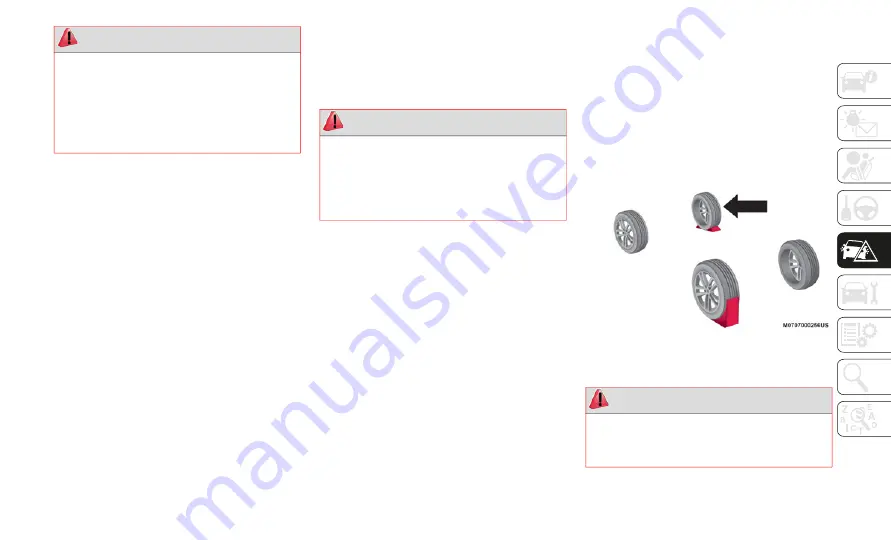
217
(Continued)
Maintenance
Always keep the jack clean.
Make sure the moving parts are kept free
from dirt or rust.
Make sure the screw thread is adequately
lubricated.
Conditions Of Non-Use
Temperatures below -40°F (−40°C).
On sandy or muddy ground.
On uneven ground.
On steep roads.
In extreme weather conditions.
In direct contact with the engine or for
repairs under the vehicle.
On boats.
Jacking Instructions
NOTE:
Make sure the jack is well lubricated before
using it.
Proceed as follows:
1. Stop the vehicle in a position that does
not cause any danger to traffic and lets
you change the tire in safety, as far as
possible from the edge of the driving
lane. The ground must be flat and suffi
-
ciently compact.
2. Turn on the Hazard Warning Lights and
engage the parking brake.
3. For vehicles with automatic transmis
-
sion, place the gear selector in PARK (P).
For vehicles with manual transmission,
place gear selector in REVERSE (R) and
cycle the engine to OFF.
4. Stop the engine. The motor must be kept
off as long as the vehicle is lifted off the
ground.
5. Remove the jack and tools.
6. Block both the front and rear of the wheel
diagonally opposite of the jacking posi
-
tion. For example, if changing the right
front tire, block the left rear wheel.
Blocking Right Front Tire And Left Rear Tire
Removing A Tire
WARNING!
A loose tire or jack thrown forward in a
collision or hard stop could endanger the
occupants of the vehicle. Always stow the
jack parts and the spare tire in the places
provided. Have the deflated (flat) tire
repaired or replaced immediately.
WARNING!
Do not attempt to change a tire on the side
of the vehicle close to moving traffic. Pull
far enough off the road to avoid being hit
when operating the jack or changing the
wheel.
WARNING!
Carefully follow these tire changing
warnings to help prevent personal injury or
damage to your vehicle:
















































